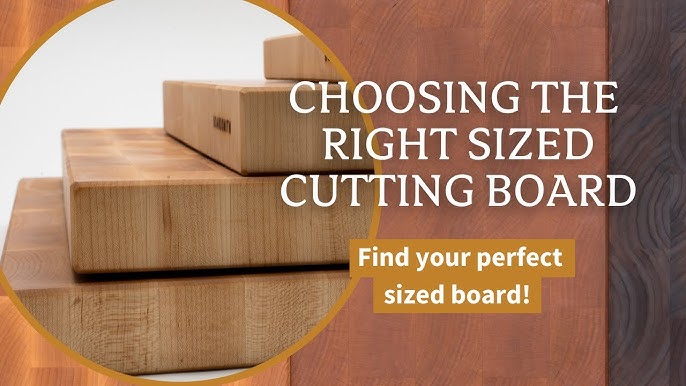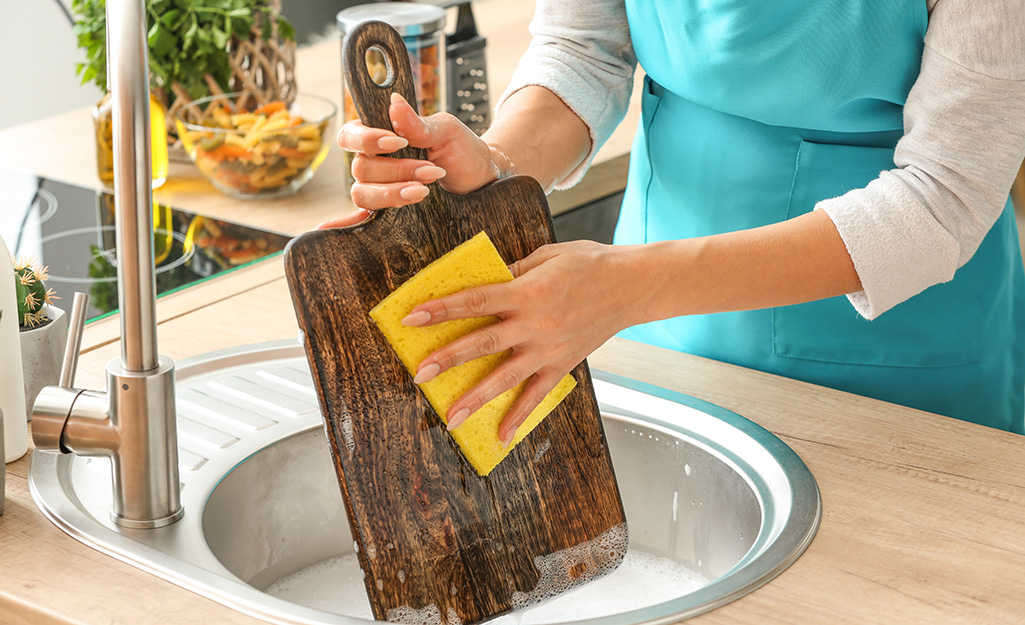
Choosing the right cutting board is an essential step in ensuring efficiency and safety in your kitchen. Whether you’re a professional chef or a home cook, the cutting board you select can significantly influence your cooking experience. From material types to maintenance tips, this guide will walk you through everything you need to know about selecting the perfect cutting board for your needs.
Why the Right Cutting Board Matters
A cutting board is more than just a kitchen tool; it protects your knives, prevents cross-contamination, and ensures a smooth cooking process. The wrong choice can dull your knives, harbor bacteria, or fail to meet your specific culinary requirements.
Types of Cutting Boards: Pros and Cons
1. Wooden Cutting Boards
Wooden cutting boards are a classic choice known for their durability and knife-friendly surface. They are often made from hardwoods like maple, walnut, or cherry.
- Pros:
- Gentle on knife edges, preventing dulling.
- Naturally resistant to bacteria due to the wood’s antimicrobial properties.
- Aesthetic appeal, adding warmth to your kitchen.
- Can be refinished if scratched or worn.
- Cons:
- Require regular maintenance, including oiling.
- Not dishwasher-safe.
- Susceptible to water damage if left wet.
2. Plastic Cutting Boards
Plastic cutting boards are a popular option for their affordability and practicality.
- Pros:
- Lightweight and easy to handle.
- Dishwasher-safe for easy cleaning.
- Available in a variety of colors, ideal for color-coding to avoid cross-contamination.
- Cons:
- Can develop deep grooves over time, which harbor bacteria.
- Less durable than wood or bamboo.

3. Bamboo Cutting Boards
Bamboo boards are an eco-friendly choice, offering a hard surface and sleek design.
- Pros:
- Sustainable and environmentally friendly.
- Hard surface resists knife marks.
- Requires less maintenance than traditional wood.
- Cons:
- Hard surface can dull knives over time.
- Susceptible to cracking if not properly cared for.
4. Glass and Marble Cutting Boards
Although less common, glass and marble boards have their niche uses.
- Pros:
- Easy to clean and non-porous.
- Resistant to staining and odors.
- Often used for rolling dough or presenting food.
- Cons:
- Extremely hard on knives, causing them to dull quickly.
- Slippery surface can be hazardous.
- Noisy and prone to cracking if dropped.
How to Choose Based on Your Needs
For Everyday Cooking
If you prepare meals frequently, opt for a durable wooden or plastic cutting board. Wooden boards are ideal for chopping vegetables or slicing bread, while plastic boards are great for handling raw meats.
For Specialized Tasks
Consider investing in multiple cutting boards:
- Use a plastic board for raw proteins to prevent bacterial contamination.
- Use a wooden board for chopping vegetables or delicate tasks like mincing herbs.
For Presentation
For serving cheese, charcuterie, or bread, bamboo or marble boards double as stylish presentation pieces.
Caring for Your Cutting Board
Proper maintenance is key to prolonging the life of your cutting board:
- Wooden Boards: Clean with mild soap and water, dry immediately, and apply food-grade mineral oil regularly to prevent cracking.
- Plastic Boards: Wash in the dishwasher or by hand with hot, soapy water. Replace when deep grooves develop.
- Bamboo Boards: Treat similarly to wood but with less frequent oiling.
- Glass/Marble Boards: Simply wipe down with soap and water; avoid using abrasive pads that can scratch the surface.
My Personal Experience with Cutting Boards
As someone who spends a lot of time in the kitchen, I’ve tried various types of cutting boards over the years. My wooden cutting board, made from end-grain maple, has been a game-changer. Its sturdy surface is gentle on my knives, and with regular oiling, it looks as good as new even after years of use.
I also keep a set of color-coded plastic boards for handling raw meat and seafood. These are lightweight, easy to clean, and give me peace of mind when it comes to food safety. While I appreciate the aesthetics of bamboo and marble boards, I find them less practical for daily cooking due to their impact on knife sharpness.
The key lesson I’ve learned? No single cutting board can do it all. Having a combination of boards tailored to different tasks has streamlined my cooking process and extended the lifespan of my kitchen tools.
:max_bytes(150000):strip_icc()/alr-john-boos-reversible-maple-wood-cutting-board-kim-shupe-03-5e1286bff39d47b39bdc2623c54e17bc.jpeg)
Conclusion
Selecting the right cutting board is an investment in both your kitchen’s functionality and your cooking experience. By understanding the benefits and drawbacks of different materials and maintaining your boards properly, you can ensure a safer and more efficient workspace. Whether you prefer the timeless appeal of wood or the practicality of plastic, the perfect cutting board is out there to meet your needs.
FAQs
Q: How often should I replace my cutting board?
A: Replace plastic boards when they develop deep grooves that are difficult to clean. Wooden boards can last for years with proper care but should be replaced if they crack or warp.
Q: Can I use the same cutting board for meat and vegetables?
A: It’s best to use separate boards to avoid cross-contamination. Color-coded plastic boards are ideal for this purpose.
Q: How do I prevent my wooden cutting board from cracking?
A: Regularly apply food-grade mineral oil to maintain its moisture balance. Avoid soaking it in water or leaving it wet.
Q: Are bamboo cutting boards better than wood?
A: Bamboo boards are more sustainable and require less maintenance but can be harder on knives compared to traditional wooden boards.
Q: Can I put my cutting board in the dishwasher?
A: Only plastic boards are dishwasher-safe. Wooden and bamboo boards should be hand-washed and dried immediately.
Q: What size cutting board should I buy?
A: Choose a size that fits your counter space and cooking needs. Larger boards are ideal for big tasks, while smaller boards work well for quick chopping.
Q: Are glass cutting boards sanitary?
A: Yes, glass boards are non-porous and easy to clean, but their surface can dull knives and pose a slipping hazard.
Q: How can I remove stains from my cutting board?
A: For wooden boards, rub with a mixture of baking soda and water. For plastic boards, use a bleach solution for thorough cleaning.
Q: Is end-grain wood better than edge-grain?
A: End-grain boards are more durable and knife-friendly, though they tend to be pricier than edge-grain boards.
Q: Can I use olive oil on my cutting board?
A: It’s better to use food-grade mineral oil or beeswax. Cooking oils like olive oil can go rancid over time.